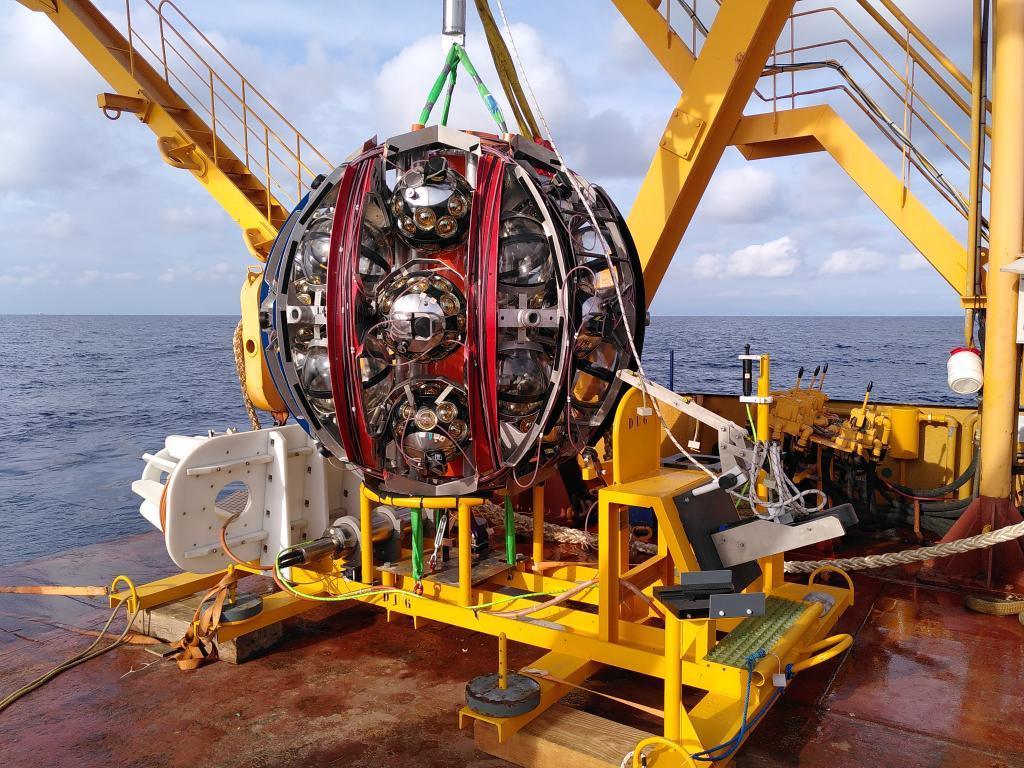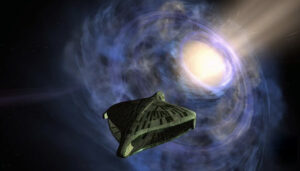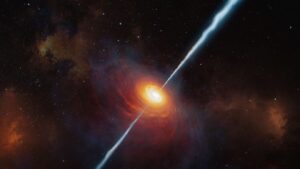How do you speed up something that only interacts regularly with itself?
That’s the question gripping astrophysicists at the Cubic Kilometer Neutrino Telescope (KM3NeT). In 2023, before the telescope was even completed, a high-energy neutrino shot through the Earth’s atmosphere and into the detection zone of KM3NeT. Since KM3NeT looks for neutrinos, finding one wasn’t a huge surprise. But this was the most energetic neutrino ever detected. So energetic, in fact, that it crashed their computer.
Where did it come from?
A telescope at the bottom of the ocean
KM3NeT looks about as much like a traditional telescope as, say, a rhinoceros does. It consists of indented spheres of metal standing guard over smaller glass spheres hanging from strings. The whole contraption sits 3,500m underwater at the bottom of the Mediterranean Sea.
Its strange design comes from its purpose: to hunt some of the most elusive particles in the universe. Neutrinos are omnipresent, with over a billion of them flowing through each square centimeter of space every second. But they barely interact with matter, and not at all with light or magnetic fields.
Still, some dramatic events create ultrarelativistic neutrinos that move at almost the speed of light. Both cosmic rays hitting the upper atmosphere and supernovae create neutrinos observable from Earth. Astrophysicists try to detect these energetic neutrinos.
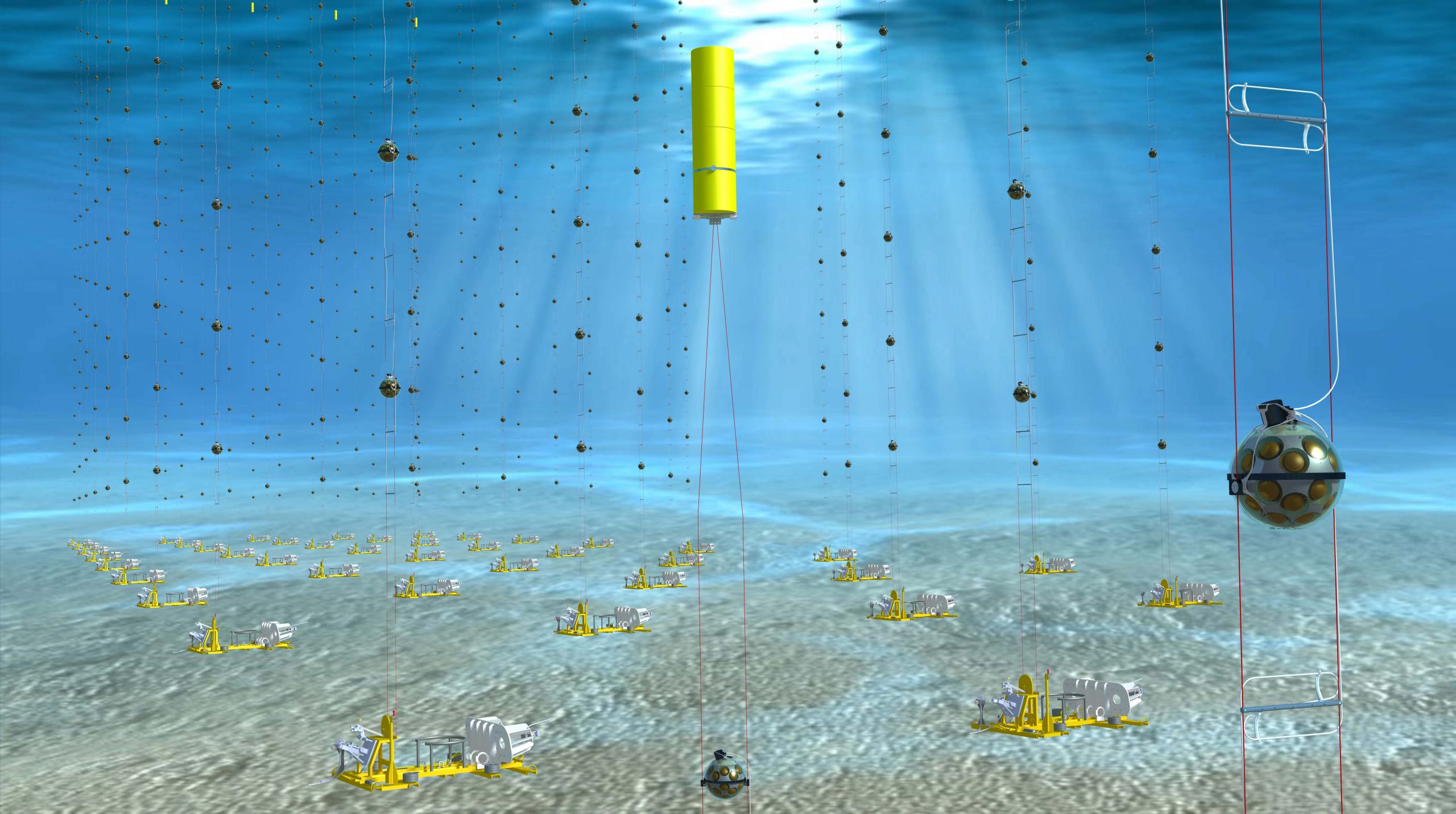
An artist’s impression of KM3NeT. Photo: KM3NeT
But detecting something that doesn’t interact with light, magnetism, or most matter is mildly challenging, to say the least. The most famous neutrino detector in the world, IceCube, uses the Antarctic ice sheet to do so. KM3NeT opts for the salty waters of the Mediterranean Sea.
In water, light travels at only 75% of its speed in air, but neutrinos keep speeding along at the same velocity they always have. But even for a weakly interacting particle, 3,500m of water is a lot of water. Very occasionally, neutrinos collide with a proton or electron in the water with exactly the right angle and momentum to interact via the weak nuclear force.
These interactions can produce charged particles, including muons, which are more susceptible to interactions with matter. When the muons hit water molecules at velocities higher than the speed of light in water, they create a shock wave akin to a sonic boom. That, in turn, releases blue light called Cherenkov radiation.
The suspended spheres of glass and metal in KM3NeT are optical detectors searching for this Cherenkov glow. When they detect it, they use its strength and direction to trace back where the muon-molecule collision happened and what the muon’s energy was. From there, they can work out the energy of its parent neutrino.
The neutrino that crashed the computer
Lowering precious optical devices to the sea floor takes a lot of time. By February 13, 2023, only 6% of KM3NeT detectors were in place. They had been detecting a few neutrinos here and there, but that day, something strange came in.
“When I first tried looking at this event, my program crashed,” KM3NeT physicist Paschal Coyle told New Scientist.
It was a neutrino unlike anything seen before. Hundreds of times more energetic than the previous record-holder, it defied traditional astrophysical origins like supernovae, gamma ray bursts, or black hole accretion.
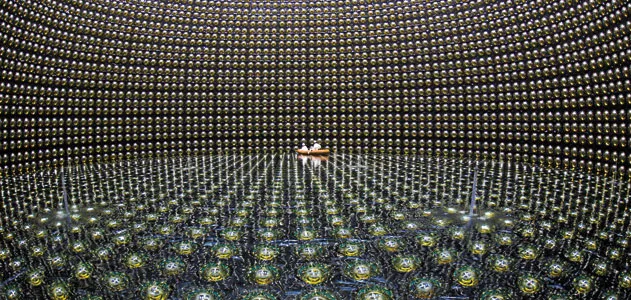
The Super-Kamiokande neutrino telescope in Japan is one of the most prolific finders of neutrinos. Photo: Kamioka Observatory / ICRR / University of Tokyo
When they looked in the region of the sky from which the neutrino came, they found nothing. No signs of supernovae, energetic distant galaxies, or stellar collisions. Just empty space.
Empty space does have its own background field of neutrinos, but high-energy neutrinos are exceedingly rare.
The team’s paper on the event came out earlier this year in Nature. In it, they calculate the rate at which we should be observing such neutrinos and find that about one should show up every 70 years. The chances that such a neutrino would show up one year into the run of a telescope that was only 6% completed are stunningly low.
The KM3NeT team has another hypothesis. Particle physicists have long theorized that high-energy cosmic rays (protons and electrons traveling near the speed of light) could interact with the background light of the universe and produce massively energetic neutrinos. This event would be exceedingly rare and has never previously been observed.
At least, as far as we know. It’s possible that KM3NeT observed it in 2023. But astrophysicists have a lot of work to do before the identity of the mysterious neutrino is anywhere close to resolved.
